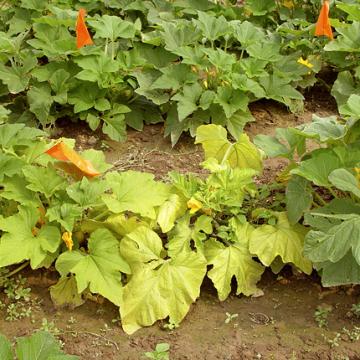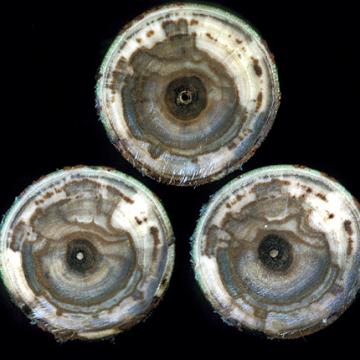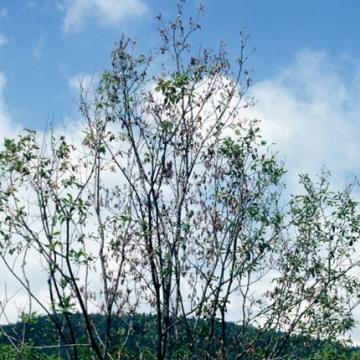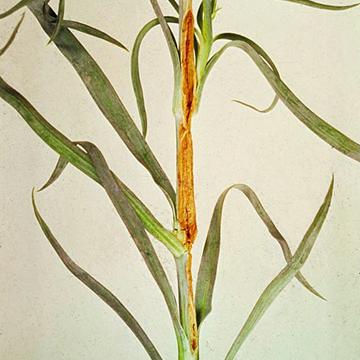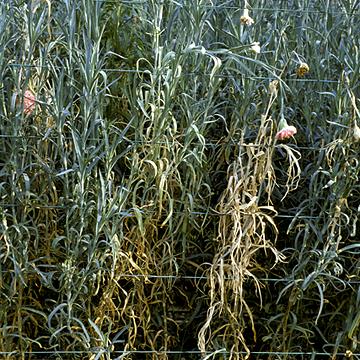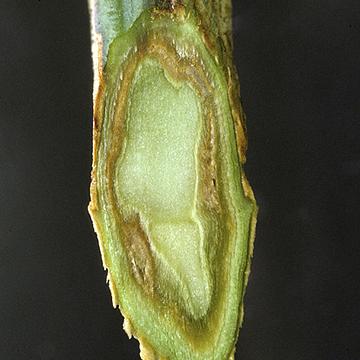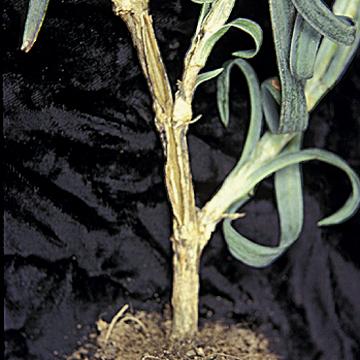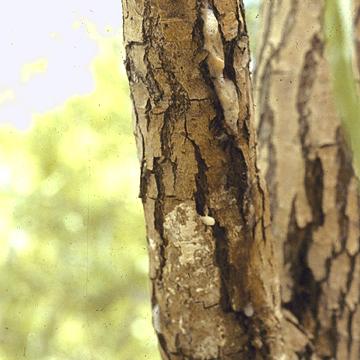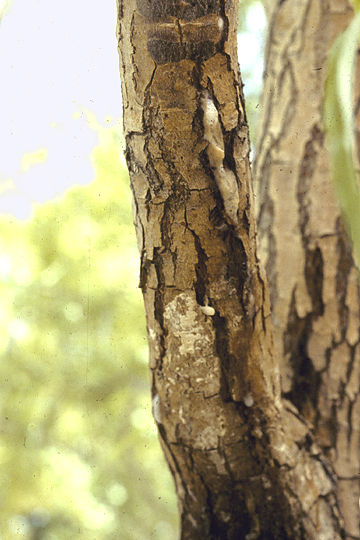DISEASE: Aster yellows
HOST: Squash
Diagnostic characteristics for the disease are yellowing of young leaves, proliferation of secondary shoots, and rigid erect habit. Leaves are misshapen and smaller than normal and have stiff, thick laminae.
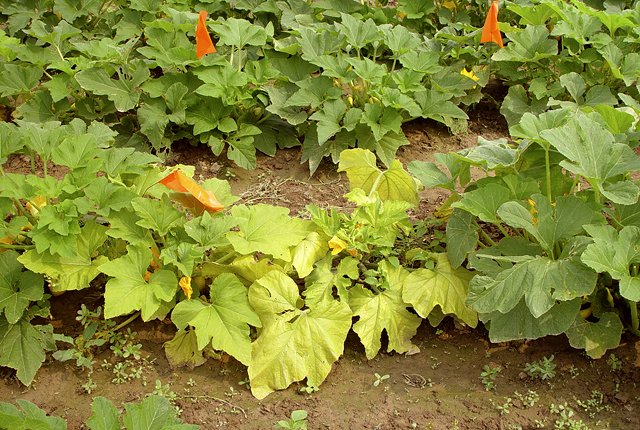
Aster yellows | Squash
DISEASE: Aster yellows
HOST: Squash (Cucurbita sp.)
PATHOGEN: 'Candidatus Phytoplasma asteris'
PATHOGEN SYNONYM: Phytoplasma Aster yellows group
SOURCE: S. Miller
DISEASE: Bacterial wilt and dieback
HOST: Willow
Cross sections of the characteristic "watermark stain" of diseased wood. Wilt and dieback occur as disease progresses.
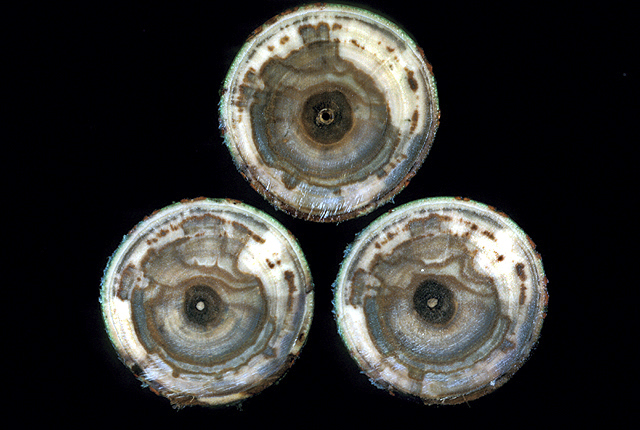
Bacterial wilt and dieback | Willow
DISEASE: Bacterial wilt and dieback
HOST: Willow (Salix sp.)
PATHOGEN: Brenneria salicis
PATHOGEN SYNONYM: Erwinia salicis
SOURCE: Y. Sakamoto, M. Goto
DISEASE: Bacterial wilt and dieback
HOST: Willow
Severely diseased tree with dieback symptoms.

Bacterial wilt and dieback | Willow
DISEASE: Bacterial wilt and dieback
HOST: Willow (Salix sp.)
PATHOGEN: Brenneria salicis
PATHOGEN SYNONYM: Erwinia salicis
SOURCE: Y. Sakamoto, M. Goto
DISEASE: Bacterial wilt
HOST: Carnation
Carnation stem with cankers and cracks. Yellow sticky bacterial slime is often seen.
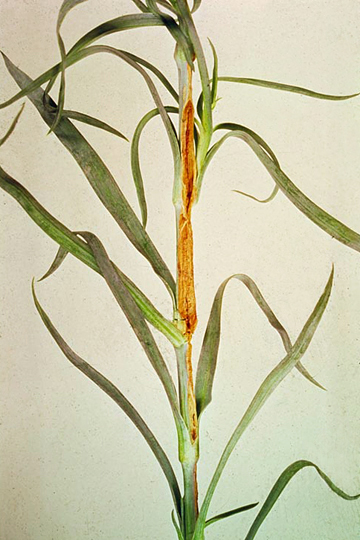
Bacterial wilt | Carnation
DISEASE: Bacterial wilt
HOST: Carnation (Dianthus caryophyllus)
PATHOGEN: Burkholderia caryophylli
PATHOGEN SYNONYM: Pseudomonas caryophylli
SOURCE: E. Hellmers, Royal Veterinary & Agricultural University
DISEASE: Bacterial wilt
HOST: Carnation
Severely diseased and withered plants.
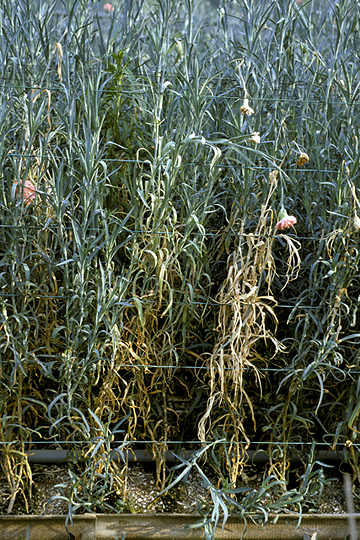
Bacterial wilt | Carnation
DISEASE: Bacterial wilt
HOST: Carnation (Dianthus caryophyllus)
PATHOGEN: Burkholderia caryophylli
PATHOGEN SYNONYM: Pseudomonas caryophylli
SOURCE: T. Saito, M. Goto
DISEASE: Bacterial wilt
HOST: Carnation
Sliced stem with discolored vascular bundles.
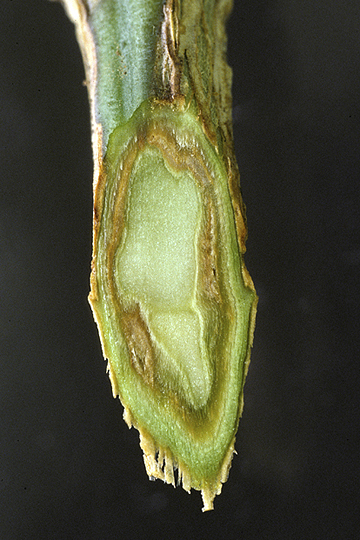
Bacterial wilt | Carnation
DISEASE: Bacterial wilt
HOST: Carnation (Dianthus caryophyllus)
PATHOGEN: Burkholderia caryophylli
PATHOGEN SYNONYM: Pseudomonas caryophylli
SOURCE: T. Saito, M. Goto
DISEASE: Bacterial wilt
HOST: Carnation
Systemic infection caused cracking and necrosis of the stem.
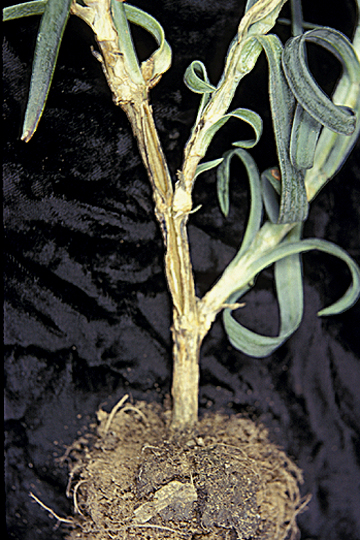
Bacterial wilt | Carnation
DISEASE: Bacterial wilt
HOST: Carnation (Dianthus caryophyllus)
PATHOGEN: Burkholderia caryophylli
PATHOGEN SYNONYM: Pseudomonas caryophylli
SOURCE: R. Raabe
DISEASE: Bacterial wilt
HOST: Squash
Field with severe symptoms of wilt. Foliage often is chlorotic and leaf margins may be chlorotic and necrotic before plant death. Bacterial ooze may be seen streaming from the xylem when infected stems are cut.
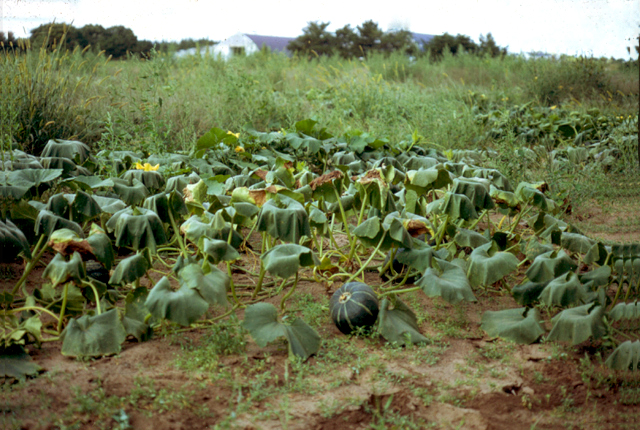
Bacterial wilt | Squash
DISEASE: Bacterial wilt
HOST: Squash (Cucurbita maxima)
PATHOGEN: Erwinia tracheiphila
SOURCE: B. Jacobsen, M. Shurtleff


